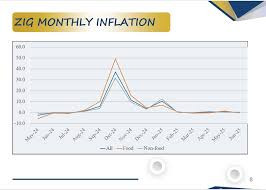
ZIMBABWE is well known in the region and beyond for its mineral endowment, which makes up the core of its export receipts.
At the peak of the diamond rush in Zimbabwe, the country was amongst the top six diamond exporters in the world.
Right now, Zimbabwe is among the top nickel producers and a significant producer of the Platinum Group Minerals (PMGs) in general.
Gold has always been one of the highest foreign currency earners for Zimbabwe with two-thirds of the 35,1 tonnes produced and exported in 2022 coming from the small-scale miners.
However, 2023 started on a rough note with the exports easing by 22% compared to the first five months of 2022. With the lithium rush and the commodities boom globally experienced in the past few years, the country has an ambitious goal of increasing the revenues from the mining sector to US$12 billion.
Besides mining, the country also rakes in significant exports from the agriculture sector, mainly the golden leaf, tobacco.
Zimbabwe is among the top exporters of unmanufactured tobacco in the world, raking in US$345 million in the first five months of 2023.
However, arguments are that if value addition increase from just exporting unmanufactured tobacco to cigarettes, the number could increase substantially.
- Mavhunga puts DeMbare into Chibuku quarterfinals
- Bulls to charge into Zimbabwe gold stocks
- Ndiraya concerned as goals dry up
- Letters: How solar power is transforming African farms
Keep Reading
Nevertheless exports in tobacco in 2022 were to the tune of US$1 billion.
Back in the day, the local cotton market used to be very vibrant, not only contributing to the exports but forming a source of livelihoods especially in areas like Kadoma, Sanyati and Gokwe.
The tea grown in the Eastern Highlands can also be mentioned amongst the agricultural exports as it brings in on average US$1,5 million per month. Sugarcane exports are also noticeablein the agriculture sector.
Surprisingly, electrical energy is also among Zimbabwe’s top exports, at least for the first five months of 2023.
Despite erratic power cuts and load-shedding in the country, the exports in electricity energy averaged US$2,4 million per month in 2023 and were amongst the top 20 exports year to date.
Despite Zimbabwe being a dump site for a lot of manufactured and finished products, it is also a significant exporter of raw materials.
This probably explains why the local manufacturing industry isnot as vibrant as it used to be and perhaps why unemployment levels continue to increase.
In 2022 the country made exports worth US$6,6 billion, according to trade statistics, and this was 10% higher than 2021 export receipts.
In fact, exports from Zimbabwe have been growing annually over the past years despite the first five months of 2023 being slightly lower than the previous comparable period.
Zimbabwe is also a major importer, in fact, it is a net importer as shown by the balance of trade above.
Early in the year, duty on basic goods importation was scrapped, which will likely trigger our increase in import payments.
Since June 2020, the foreign currency auction system has financed some of the imports in the country, with the auction on average funding 20%of the country’s imports.
Between January 2020 and May 2023, Zimbabwe imported US$4,2 billion worth of petroleum oils, averaging an import bill of US$102 million per month. This is by far the largest import in the country and has been consistently so.
Despite the government’s efforts to ban the importation of motor vehicles older than 10 years since the year of manufacturing, the fact that we do not have a vibrant car manufacturing or assembling sector locally is continually witnessed in the import bill.
A total of US$182 million worth of motor vehicles both for transportation of people and goods were imported since the beginning of the year.
Despite exporting significant electrical energy, the country’s electricity energy import bill amounted to US$104 millionin the first five months of the year, translating to US$21 million per month spent importing electricity as opposed to US$2,4 million raked in.
The rationale forimporting and exporting simultaneously lies in the technical generation and transportation of electrical energy.
With a boom in construction and mining in the country, there has also been an increase in the importation of mining machinery and yellow equipment. The country imported US$96 million worth of this capital equipment in the first five months of 2023 and the equipment is expected to have ripple effects in the mining and construction sectors. In the agriculture sector, Zimbabwe also imports significantly. This year, mineral or chemical fertiliser imports are to the tune of US$96 million.
In the previous years, the country has also imported significant amounts of grain, mainly maize and wheat.
However, although there are still imports, the numbers have decreased, owing to the above-average 2022/23 agriculture season in the country.
Overall, the import bill is standing at US$3,6 billion versus exports of US$2,6 billion, representing a US$1 billion or 39% trade deficit.
Besides the exports, the country also has other foreign currency inflows from remittances and foreign aid amongst others.
In 2022, foreign currency inflows neared US$12 billion and are expected to surpass that in the current year.
Hozheri is an investment analyst with an interest in sharing opinions on capital markets performance, the economy and international trade, among other areas. He holds a B. Com in Finance and is progressing well with the CFA programme. — 0784 707 653 and Rufaro Hozheri is his username for all social media platforms.










